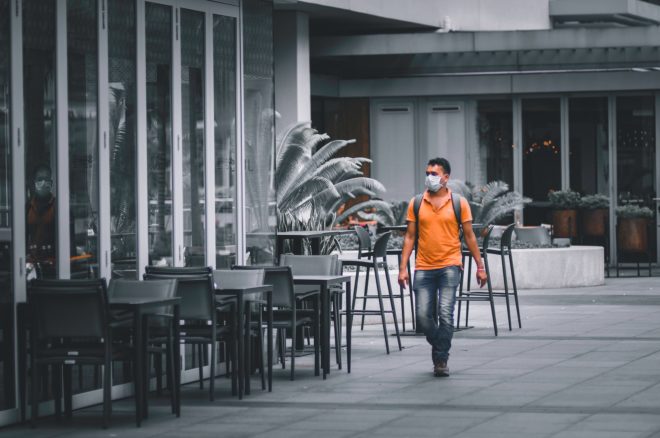Restaurateurs Adapt to New Consumer Preferences

Restaurants worldwide are finalizing their checklists for sanitation requirements, curbside and delivery setup, and figuring out new seating layouts for six feet of social distance. Nevertheless, there are some restaurants that are taking creativity a little further when it comes to re-opening non-essential companies.
Some government officials have instituted a Temporary Outdoor Restaurant Permit, which allows restaurants to use parking spots for additional seating. In addition to this being helpful for customers who feel safer outside than within a socially confined space, these permits also provide the option of using tents (smaller than 200 square feet). Regardless, there must be enough room for emergency vehicles and American Disabilities Act (ADA) accessibility features. Restaurant owners must approve seating arrangements ahead of time with their municipality.
In Amsterdam, Mediamatic ETEN is selling tickets for customers to dine outside. Its owners have not merely created a typical outdoor bistro area with tables, chairs and umbrellas. This Dutch restaurant is selling four-course vegetarian meals for dining in quarantined greenhouses. Upcoming reservations are completely sold out until June, according to the restaurant’s website.
While seating areas near the street are not uncommon in U.S. restaurants, post-COVID-19 areas must follow stricter guidelines to help customers enjoy outside dining with added safety. Street Seats specifically, which are being installed in major cities such as New York City along the curb line or on wide sidewalks, must not be near fire hydrants, driveways, newsstands or bus stops. New installations cannot be too close to moving traffic lanes, or close to intersections and turning lanes.
In addition to creative seating arrangements, restaurants are trying to find economical ways to both save their food and help customers, too — whether customers care to dine in or not. In addition to prepared food, restaurateurs are also offering groceries to their customers. Customers can buy perishables and non-perishables directly from restaurants to use at home. While this may seem counterproductive for the restaurant’s ambiance, restaurants are finding that their customers are eager to skip long grocery lines. Some restaurant owners are also finding groceries to supplement their revenue due to impulse purchases when customers arrive to retrieve prepared food.
Sysco, a notable restaurant supplier, is assisting restaurants in the process of selling their own groceries. Restaurants often buy groceries in bulk: multi-pound bags of flour for bakeries, or boxes of garden vegetables. Even though customers are not coming inside with the same amount of traffic, restaurants are offering opportunities for their customers to skip six-foot-spaced waiting lines within crowded groceries stores.
Tenko Ramen, a ramen shop based in San Antonio, Texas, is one of several examples of restaurateurs capitalizing on this trend. “It’s a way to help us kind of stay afloat,” said Jennifer Dobbertin, the owner of Tenko Ramen, to NPR. Beyond her regular menu of dishes like spicy miso, kimchi and edamame, her restaurant is selling grocery items like cabbage heads.
In Atlanta, 8ARM restaurant has introduced community supported agriculture (CSA). Instead of curbside pickups of their own meals, they are also selling bags with vegetables and eggs from local farmers. Customers can also buy bottles of wine, meat, bread, coffee, soap and more, according to the Atlanta restaurant’s official site. Customers can choose between single, one-time purchases and recurring subscriptions.
While these tactics may not be the saving grace for restaurants that have already lost approximately eight million employees and $80 billion in sales as of the end of April, creative ideas like these may be what consumers need to hear about in order to gather the courage to return to their favorite restaurants.
Photo by Victor He on Unsplash

Leave a Reply